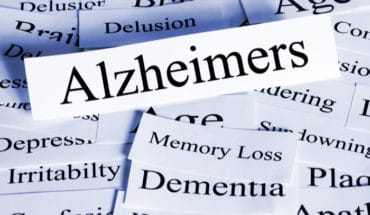Cardiac arrest doesn’t only happen to old people. Every week in the UK, 12 seemingly fit and healthy young people, aged 35 years and under, die from Young, Sudden Cardiac Death or YSCD.
The definition of young sudden cardiac death
Sudden cardiac death describes unexpected and immediate fatality from a heart problem within 12 hours of apparently normal health. In fact some young cardiac deaths are so unexpected and without warning they are mistakenly attributed to drowning or road accidents.
Sudden death
What adds to the shock and distress of YSCD is in the vast majority of cases – 80% – there were no signs or symptoms. This makes cardiac screening crucial.
Cardiac risk in the young
Heart charity Cardiac Risk in the Young (CRY) tests around 27,000 young people each year aged between 14 and 35. Since its launch in 1995 it has screened over 165,000 young people. The majority of those tested receive the all clear. However one in 300 tested by the screening programme will be flagged as having a potentially life-threatening condition. Read more about heart charity Cardiac Risk in the Young or CRY
Read our article on how to manage a heart attack whilst on your own.
Lower age limit
The lower age limit for screening is 14 years of age because this is when most teenagers are well into puberty. Puberty is an important time because some heart conditions (such as hypertrophic cardiomyopathy) don’t fully show until then. Therefore screening before puberty has begun means this heart issue could remain undiagnosed.
Additionally, under the age of 14 the heart is still physically undeveloped and could give unrepresentative results.
The screening
The screening programme consists of a health questionnaire which considers the symptoms of cardiac diseases such as chest pain, breathlessness, dizziness, palpitations or black outs.
Family history
Furthermore, the screening asks probing questions to reveal if there is a family history of cardiac conditions. Family history is an important predictor as many conditions causing sudden death in young people are hereditary.
ECG
An electrocardiogram test or ECG will help flag up most common cardiac abnormalities.
Take the lead
This ECG gives an electrical tracing of the heart and searches for electrical faults of the heart. It also flags up any disease of the heart muscle which is identifiable by a change in the heart’s shape, size or structure.
This ECG consists of 12 simple leads being placed on the chest wall for about two minutes.
The results
The results of the ECG need to be read and interpreted by a cardiologist.
The majority of people leave with a clean bill of health.
- 4% will need further tests
- 0.2% will go on to reveal a serious health issue and are then given additional help and support to manage their condition and continue to live a full and active life
- 1% have a minor problem
- the other 2.8% can be reassured
Further tests
If further results are required an echocardiogram or ultrasound scan is performed.
Causes of cardiac problems in young people
The British Heart Foundation identifies the following risk factors: someone may have an undiagnosed heart condition; a history of cardiac disease, cot death or fitting in your family, if you have previously suffered from fitting, passing out, shortness of breath or palpitations.
Other causes
These can include major issues such as long QT syndrome (LQTS) a condition which results in an increased risk of an irregular heartbeat. This irregularity can cause palpitations, fainting, drowning, or sudden death with these incidents triggered by exercise or stress.
Minor issues can include faulty mitral valves or a very small hole in the heart.
Treatment
Some conditions need surgery or medical treatment. Other conditions simply need lifestyle changes and drug treatments. Some need internal cardioverter defibrillators or ICD – a small device which sends electrical pulses to regulate abnormal heart rhythms, more specifically those that can cause cardiac arrest. Some people may need cardiac surgery.
Cost
If a young person under the age of 35 has suffered from YSCD the rest of the family can be screened for free by the NHS.
All of CRY’s public events are free to attend.
Raise awareness
It is vitally important to raise awareness of the symptoms of cardiac abnormalities and conditions which can lead to sudden cardiac death.
Link to sport
If someone who plays sport carries an undiagnosed heart condition capable of causing sudden cardiac death, they are three times more likely to die when playing sport.
These issues could include:
- Hypertrophic cardiomyopathy,
- Arrhythmogenic right ventricular cardiomyopathy
- Blocked artery
However, many young people who have been diagnosed as having a cardiac abnormality are able to continue to enjoy and excel at their sports and are much safer being appropriately treated and monitored.
What to bring
Details of your GP and any relevant medical conditions you might need to put on the questionnaire. Furthermore, bring details of any medications you may be taking, or bring them with you.
- What is a seizure? - 13th March 2025
- Febrile Convulsions and Seizures in Children - 13th March 2025
- Why women are less likely to receive CPR or survive cardiac arrest - 6th March 2025






